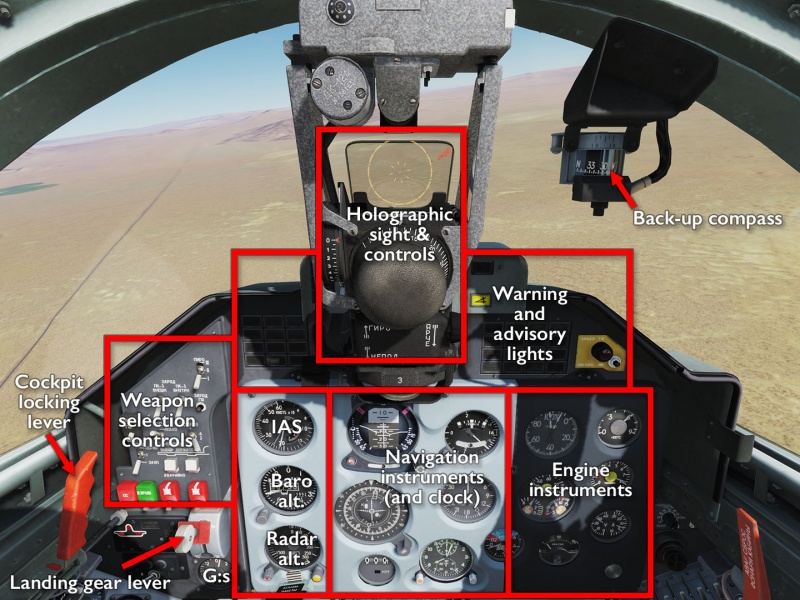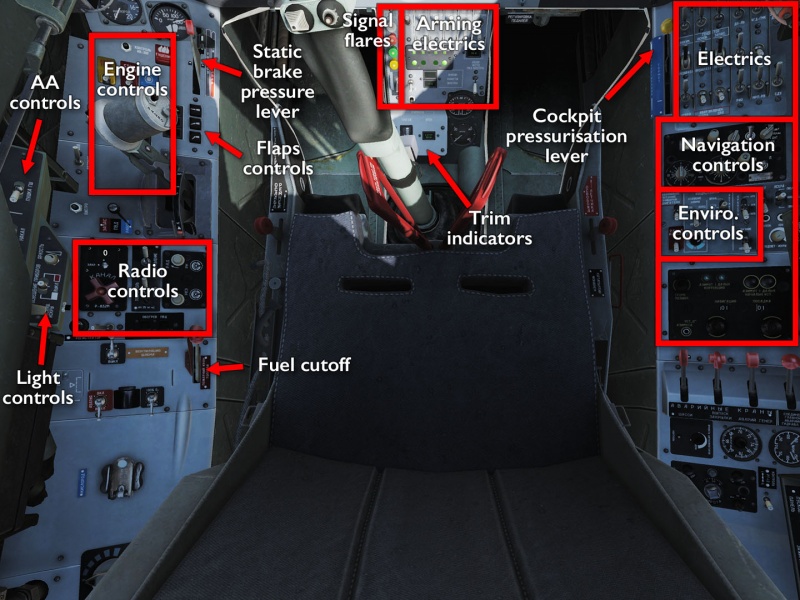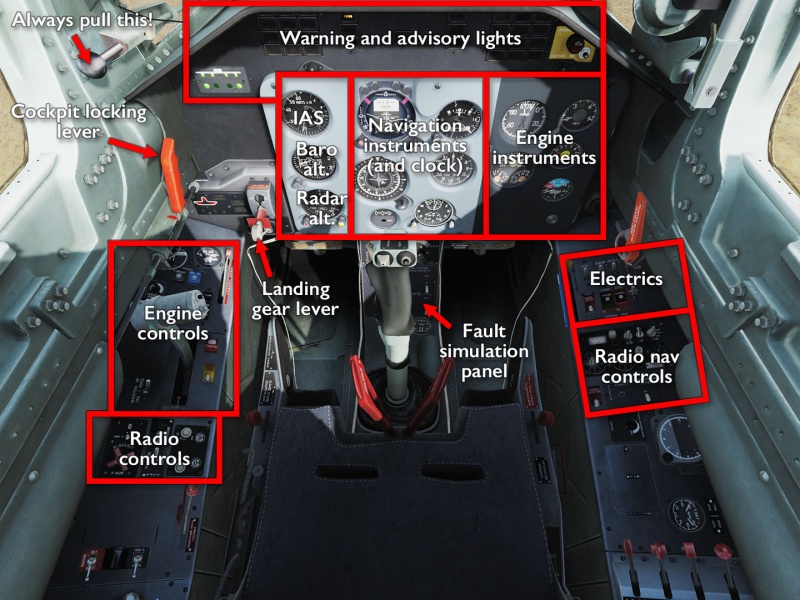L-39 Albatros: Difference between revisions
mNo edit summary |
m (→�) |
||
| Line 23: | Line 23: | ||
=== Cockpit overview === | === Cockpit overview === | ||
For the most part, the C and ZA have the same instrumentation and controls. The main difference lies in the weapons control panel in the ZA, and that some circuit breakers needed to select and arm weapons have moved around to accommodate this more combat-focused setup. In addition, the ZA has two small and very sneaky control panels on the left wall: one to control the cockpit lights and another to select and prepare any air-to-ar missiles that might be equipped. | |||
[[File:L39-Dash.jpg|800px|frameless|L-39ZA Front Dashboard]] | |||
[[File:L39-Pit.jpg|800px|frameless|L-39ZA Front Cockpit]] | |||
[[File:L39-Backseat.jpg|800px|frameless|L-39ZA Rear cockpit]] | |||
The rear cockpit in both models duplicate ''some but not all'' of the front functions. Specifically, it features basic flying instruments, and means for shutting down the aircraft in case the instructor has to land, but most of the start-up controls, and all the weapon controls, can only be found in the front seat. | |||
=== Getting into the air === | === Getting into the air === | ||
Revision as of 16:24, 3 July 2018
Bond girls have nothing on this svelte little beauty. While the L-39ZA in DCS does not come with the “nuclear torpedoes” from its appearance in Tomorrow Never Dies, it does come with an optional backseat driver. The L-39 is a Czech jet trainer aircraft for prospective MiG pilots — in particular, it features on-the-ground controls and in-air navigation systems that are very similar to what the MiG:s of its era used. Being a trainer, it has a dual cockpit that fits both an instructor and a trainee, with the instructor having access to various funny toys to make the trainee's life miserable: turning systems off to train emergency procedures and reducing visibility to teach proper IFR flying.
This was the first multi-crew module in DCS, and gave players all kinds of homes and dreams for similar setups for the UH-1H, Mi-8MTV2 or even the venerable TF-51D. So far, though, only the SA342 offers anything similar.
The module comes with two variants: the C trainer/aerobatics model, the (slightly more) fully armed ZA light attack model. The C only has two pylons and comes with a simpler cockpit setup, whereas the ZA offers more of everything and even comes with an internal gun. Either way, these are not what you would call highly effective combat aircraft — even the F-5E-3 outclasses them by a large margin do its radar search capability (that the L-39 cannot detect), its extended engagement range, and significantly more powerful engines. The L-39 is for learning how to fly, be it visually, using instruments, or via radio navigation.
Features
As a jet trainer, the L-39 deliberately only comes with some bare essentials:
- Both the C (trainer) and ZA (light attack) models of the L-39.
- Multi-crew: fly with a friend(?) as instructor or trainee in the same aircraft.
- An IFR hood to pull down over your trainee friend's(?) head so they can't see outside.
- Dual controls: the instructor can take over when the trainee gets confused because they can't see outside.
- An infuriating differential braking system rather than regular toe brakes or NWS.
- A light assortment of guns, bombs, rockets, and even something pretending to be air-to-air missiles (mainly for the ZA). No nuclear torpedoes, though…
- ИСКРА and ПРМГ navigation and instrument landing equipment.
- NDB-based radio navigation.
Flying the L-39
Cockpit overview
For the most part, the C and ZA have the same instrumentation and controls. The main difference lies in the weapons control panel in the ZA, and that some circuit breakers needed to select and arm weapons have moved around to accommodate this more combat-focused setup. In addition, the ZA has two small and very sneaky control panels on the left wall: one to control the cockpit lights and another to select and prepare any air-to-ar missiles that might be equipped.
The rear cockpit in both models duplicate some but not all of the front functions. Specifically, it features basic flying instruments, and means for shutting down the aircraft in case the instructor has to land, but most of the start-up controls, and all the weapon controls, can only be found in the front seat.
Getting into the air
Shooting something
Links and files
- Tippis' Combined C and ZA Checklist (see also kneeboard mods).
- Chuck's L-39ZA guide.
- DCS: L-39 Albatros in the DCS shop.
Related DCS modules
- Kursant for L-39 campaign.
More information
- Aero L-39 Albatros on wikipedia.
- L-39 Albatros on globalsecurity.org.





